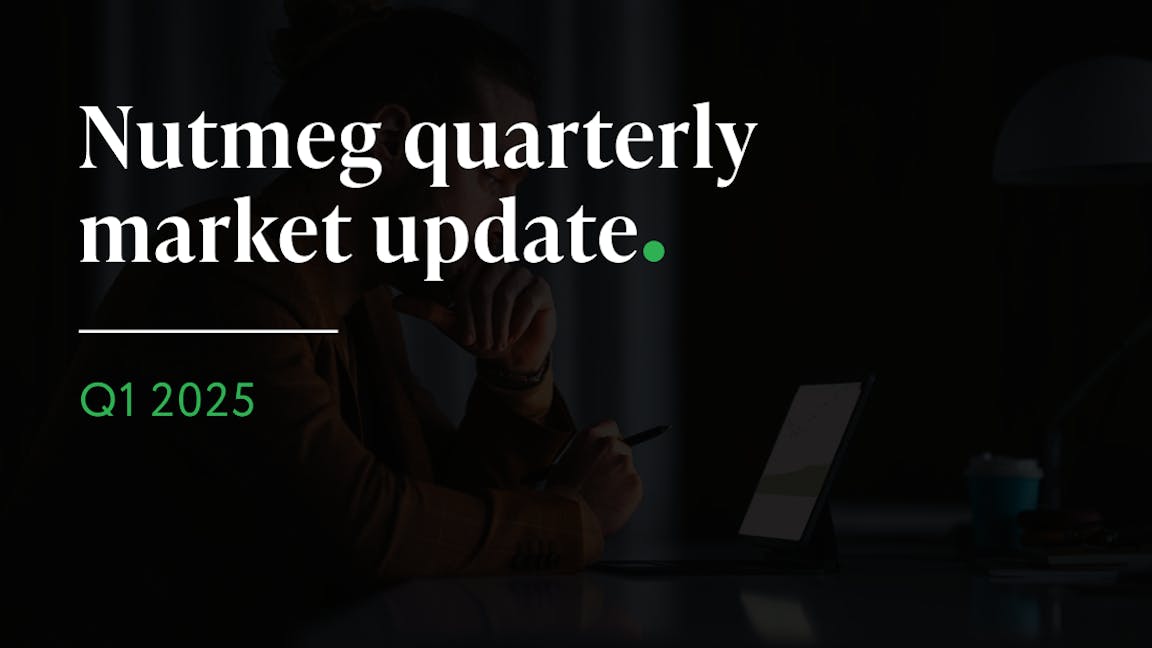
The first quarter of 2025 has been a bumpy ride for investors, and at this stage it looks like volatility will continue for a while yet. We review the key events that have moved markets and your portfolio.
We began the last quarterly update with the sentence "The final quarter of 2024 was more subdued in financial markets." The first quarter of 2025 certainly flipped the script.
In our latest monthly investor update we covered the events of March, but also felt it appropriate to delve into the details of the first days of April given the recent market reaction. However, Q1 warrants a focused, if brief, review, as a number of important geopolitical and economic events unfolded.
The quarter in review
To make sense of the moves in financial markets during the first quarter of 2025, it’s first necessary to understand what investors were broadly expecting coming into the year.
Hot on the heels of another year in which US stocks outpaced their regional counterparts, many investors felt confident that a new Republican administration would amplify the theme of US exceptionalism. At the same time, a shift towards “America First” policies was assumed to strengthen the headwinds that had already been creating challenges for economic growth in other parts of the world.
In Q1 the story played out quite differently. Tariff-related headlines buffeted US equity markets throughout the first quarter, before sweeping tariffs announced on 2 April far exceeded expectations and drove material swings in market sentiment. Investors are attentive to any signs that uncertainty may be slowing US activity.
Given elevated uncertainty, it’s unsurprising that the Federal Reserve (Fed) decided to take no action on interest rates over the quarter.
The approach from the new US administration had a galvanising impact on European policymakers. Proposals for massively increased spending – notably on defence and infrastructure – were announced by the European Commission and welcomed by investors over the quarter.
In the UK, investors had to wait until the end of the quarter for the main domestic event. Following a deterioration in the fiscal outlook, UK Chancellor, Rachel Reeves, was forced to announce new spending cuts – although UK assets were largely unperturbed by the policy changes.
Sentiment improved towards Chinese technology companies following DeepSeek’s AI breakthrough in January, and hints of a more supportive policy stance from Beijing.
Equities in Q1
- Tariff-related headlines buffeted US equity markets throughout the first quarter, and the S&P500 declined.
- European equities, cheered by proposals to spend significantly on infrastructure and defence, gained in Q1.
- UK equities quietly outperformed many other developed regions in Q1.
- In Japan, a stronger currency (yen) created headwinds for the equity market. Asian equities excluding Japan were slightly stronger.
- Emerging market equities outperformed developed markets in the first quarter.
"Within equity markets, diversification is working at both a regional and sector level, providing investors ample tools to build portfolios that can cut a smoother path through the choppy waters that likely lie ahead."
Hugh Gimber, Global Market Strategist, J.P. Morgan Asset Management
Bonds in Q1
- In bond markets, US government bonds gained. Fed Chair Jerome Powell left the door open to future rate cuts when he spoke at the bank’s March meeting, suggesting that the Fed was more concerned about the downside risks to growth than the upside risks to inflation.
- UK government bonds made very small gains in Q1, after spending cuts were announced by UK Chancellor Rachel Reeves to comply with the government’s fiscal rules.
- Eurozone interest rates were cut twice during the quarter, with further cuts expected by the end of 2025. After the announcement of spending plans by the European Commission and Germany, borrowing costs in several eurozone member states rose over the quarter.
"In bond markets, rising US recession risks led to positive returns from US Treasuries. Conversely in Europe, expectations of much larger issuance to finance new government spending programmes weighed on government bond returns. Japanese government bonds were the notable underperformer as recent data emphasises building inflationary pressures."
Hugh Gimber, Global Market Strategist, J.P. Morgan Asset Management
How we are positioning your portfolios
- Nutmeg multi-asset portfolios are built with global asset diversification at their core. In all but our highest risk managed portfolios, we have also been maintaining extra bond exposure that benefits when bond yields fall.
- Despite trimming US stocks, our portfolios remain more exposed to the US equity market than other markets because we continue to expect the US economy to outperform others in the long term. We continue to monitor the volatile policy landscape and stand ready to alter the shape of our Fully Managed, Socially Responsible Investing, and Thematic Investing portfolios.
- J.P. Morgan Asset Management advises Nutmeg on the management of the Smart Alpha portfolios, and they have also trimmed equity exposure.
- Fixed Allocation portfolios are adjusted once a year in line with our long-term views.
Find out more:
The performance of your portfolio will also be influenced by your chosen risk level, investment style, any tax wrapper, and how long you've been invested. You can see the performance of your individual portfolio in the app or on the website, or you can learn more about returns.
For regular analysis of markets, the economy, and the outlook for investors, visit Nutmeg Insights or our YouTube channel.
Risk warning
As with all investing, your capital is at risk. The value of your portfolio with Nutmeg can go down as well as up and you may get back less than you invest. Past performance and forecasts are not a reliable indicator of future performance. We do not provide investment advice in this update. Always do your own research.
